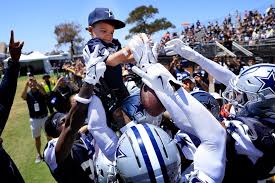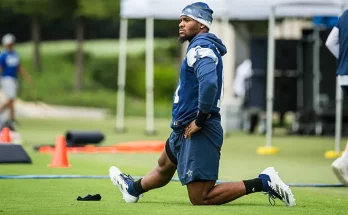In the ever-evolving landscape of college athletics, the University of Texas has long stood as a financial powerhouse. But even by its lofty standards, recent figures confirm what many had already suspected — Texas isn’t just another big name entering the Southeastern Conference (SEC). It’s entering as the top-earning program in the entire league, even before playing a single game as a member.
According to the most recent revenue reports available from USA Today and the U.S. Department of Education’s Equity in Athletics Data Analysis, Texas generated more than $239 million in athletic revenue during the fiscal year — a figure that eclipses every single school currently in the SEC. For comparison, Texas A&M, Georgia, and Alabama — traditionally dominant football powers with deep donor bases and winning histories — all came in behind the Longhorns in terms of athletic department income.
The timing of this financial dominance is particularly noteworthy. Texas and Oklahoma are set to officially join the SEC in time for the 2024 football season. But the Longhorns were already operating like an SEC juggernaut, financially speaking, well before making the move. The message is clear: Texas isn’t just joining the SEC. It’s elevating it.
Texas’ $239 million haul isn’t an outlier. Over the past decade, the Longhorns have routinely finished near the top in national athletic revenue rankings. This consistency stems from a variety of sources — robust donor support, lucrative media contracts, a passionate fan base, and the strength of the Longhorn brand in football and beyond.
A major contributor to that revenue is the Longhorn Network, the Texas-exclusive sports network launched in partnership with ESPN. While its standalone influence may have declined in the streaming era, it nonetheless helped establish Texas as a media innovator and added tens of millions of dollars to the university’s coffers in its early years.
Beyond media rights, Texas athletics draws immense support from donors and ticket sales. Darrell K Royal–Texas Memorial Stadium, with a capacity of more than 100,000, routinely hosts some of the largest crowds in college football. Merchandise sales remain among the highest in the country, and the university’s licensing agreements bring in even more income annually.
Add in a thriving fundraising arm — the Longhorn Foundation — and Texas has built a revenue engine that churns in good seasons and bad. The result is an athletics department with an unmatched war chest.
What makes Texas’ revenue dominance even more significant is the context of its impending arrival in the SEC. This is a conference known for its financial and athletic might. The likes of Alabama, Georgia, LSU, and Florida have helped turn the SEC into the richest conference in college sports, buoyed by the success of the College Football Playoff and billion-dollar media deals with ESPN and CBS.
And yet, Texas outpaces them all.
Alabama, which has won six national titles under Nick Saban, reported athletic revenue just north of $214 million — a staggering figure by most standards, but still a full $25 million behind the Longhorns. Georgia and LSU trail similarly.
For Texas to enter the SEC already ahead of its new peers in revenue is no small feat. It’s akin to an expansion NBA team outdrawing the Lakers or a new Premier League club generating more money than Manchester United before even taking the field.
The implications are vast. Texas isn’t coming in to blend in. It’s coming in to lead.
So how did Texas pull this off? The answer lies in the strength of its brand — a brand that transcends sport and resonates across generations.
The Longhorns’ iconic burnt orange and white, the Hook ‘Em Horns hand sign, and a storied football tradition that includes four national titles and two Heisman winners make Texas one of the most recognizable names in college athletics.
Even during years when on-field performance didn’t match expectations, the brand continued to deliver. That brand value, combined with institutional support and strategic investments in facilities and coaches, helped Texas remain a revenue giant.
Athletic Director Chris Del Conte has also played a pivotal role in modernizing the department. Since his arrival, Texas has poured millions into upgrading facilities, increasing athlete support services, and reimagining the fan experience. Under his leadership, Texas has positioned itself not just as a strong SEC candidate but as one of the most forward-thinking programs in the nation.
It’s easy to assume football drives everything — and in many ways, it does. But Texas’ dominance isn’t just a result of its football operation. The Longhorns have elite programs in basketball, baseball, softball, track and field, volleyball, swimming, and golf. That diversity of excellence has created multiple revenue streams and helped the university maintain its standing near the top of national rankings.
The men’s basketball program recently opened the $375 million Moody Center, a state-of-the-art arena that doubles as a concert venue and is expected to be a major revenue booster moving forward. Texas baseball routinely ranks among the national leaders in attendance and success, while volleyball has become a powerhouse that wins national championships and commands television viewership.
Simply put, Texas isn’t just a football school. It’s an everything school.
Another area where Texas’ financial strength shines is in the name, image, and likeness (NIL) space. Though universities cannot directly pay athletes, donor-backed collectives and marketing opportunities have allowed Texas to become a leader in the NIL market.
Programs like the Clark Field Collective and the Texas One Fund have raised millions to support Longhorn athletes. In turn, Texas has become an attractive destination for top recruits in multiple sports — not just for the on-field opportunities but for the brand-building potential that can translate to real income.
That’s a massive competitive advantage, particularly in a conference like the SEC, where talent acquisition is paramount and the difference between an 8–4 season and a national title can hinge on a few elite recruits.
With its existing infrastructure, donor base, and brand power, Texas is uniquely positioned to thrive in this new era — and may even help redefine what NIL success looks like at the conference level.
The arrival of Texas (and Oklahoma) is already altering the dynamics of the SEC. Scheduling formats have been revised. Divisional structures are being reconsidered. Traditional power programs are preparing for a more competitive landscape — both on the field and in the fundraising world.
For the SEC, bringing in Texas adds not just a competitive team, but an institution that elevates the entire league’s revenue ceiling. Media rights contracts will likely grow. Stadiums will be fuller. Rivalries will intensify. And the national footprint of the SEC will expand deeper into the state of Texas — a recruiting hotbed and a television market goldmine.
But with that elevation comes pressure. Expectations will be sky-high for Texas. The Longhorns will no longer be the big dog in the Big 12. They’ll be one of many heavyweights in the SEC. The competition will be fiercer. The stakes will be higher.
Still, if the financials are any indication, Texas is more than ready.
As Texas officially steps into the SEC spotlight, the money is only expected to grow. Between its share of the SEC’s future media rights deals, continued success in NIL, and a thriving fundraising environment, Texas could soon approach the $300 million revenue mark — a number that was unthinkable even a few years ago.
And unlike some programs that hit financial ceilings due to market size or donor fatigue, Texas shows no signs of slowing down. The alumni base is massive. The fan engagement is strong. The leadership is focused. The foundation is secure.
For other SEC schools, the arrival of Texas may be a wake-up call. The Longhorns aren’t coming just to compete. They’re coming to lead — in dollars, in exposure, and potentially in championships.
Texas has always done things bigger. Now it’s doing them in the biggest, baddest football conference in America. And it’s doing it as the SEC’s top earner — before even taking a snap.



